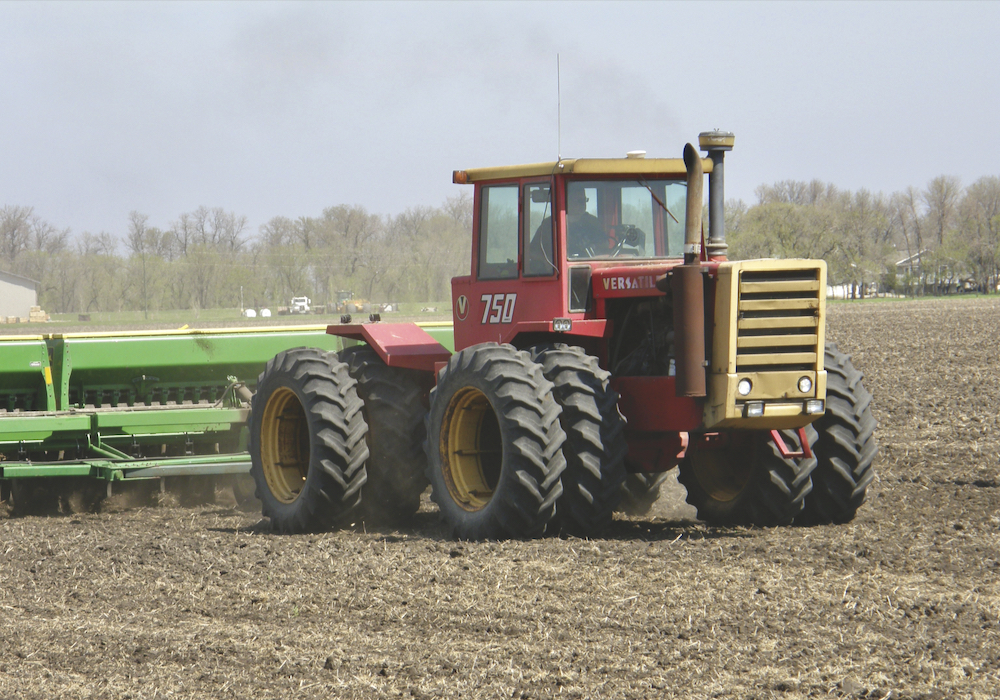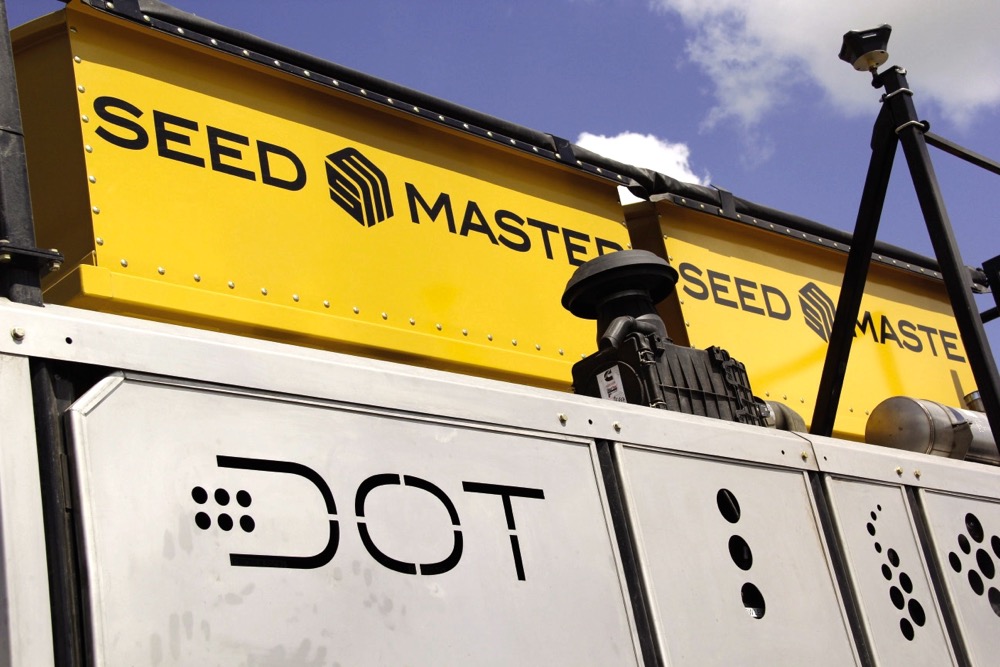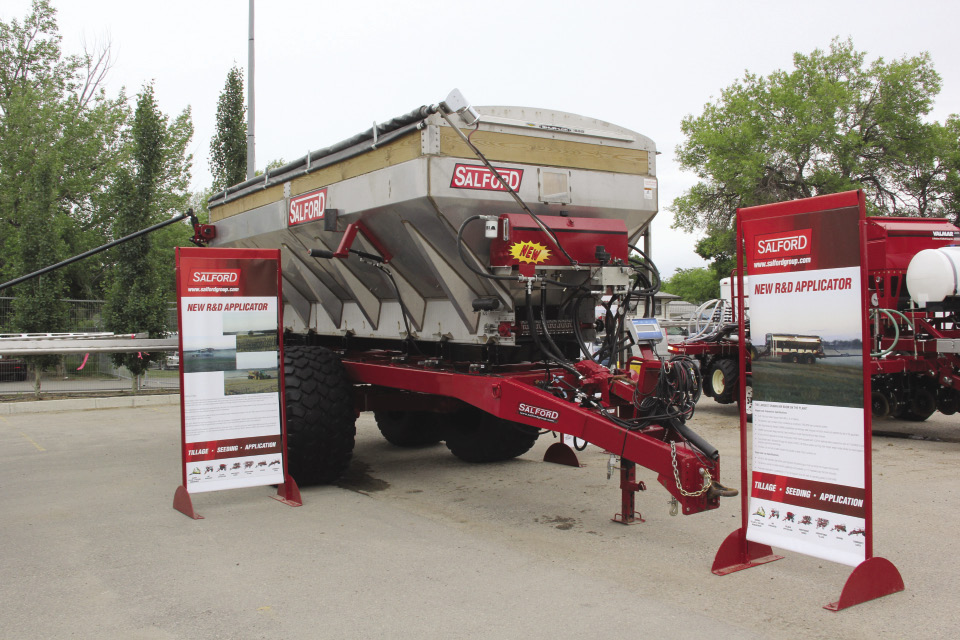When I walked through the front door at SeedMaster’s Regina manufacturing plant, Cory Beaujot, the company’s marketing and communications manager was waiting for me. I had been invited to the factory to meet senior management and hear about the new technology the brand is introducing for its 2017 model year seed drills.
They had made one other enticing offer to get me there. I was going to get a chance to walk through the company R&D shop to see what their engineers are working on.
Read Also

Summer Series: Old machines,new technology
One of my first jobs was working as a mechanic’s helper at a farm equipment dealership in the late 1970s….
I’ve been through a few R&D shops at various machinery manufacturers over the years, and it’s always fascinating to see the birth of technologies that eventually appear on new equipment.
The trouble is, the companies usually hide the really interesting stuff first.
Or I might get invited into a shop to see something that is about to make a splash in the market, but only on the condition I keep quiet about it until the company kicks off its big product launch.
Sometimes I even have to surrender my camera before putting on the standard issue safety glasses and heading out the back door of the office area into the plant.
But this day at SeedMaster, things were quite different. Armed with my camera, I was allowed to look at the products under development and the testing procedures used to evaluate them. And company management was willing to talk about the results from testing their new systems — and those from competitors.
Before setting foot in the R&D shop, however, I was taken upstairs to the engineering offices to meet Daniel Michaluk, one of the engineers working on refinements to the brand’s new UltrPro II on-frame seed metering system. Sitting at his desk, he gave me an overview, using the CAD image on his computer.
“We’re into the final development stages of getting this product into the market,” he said as he rotated the image on the screen. “It’s gone through a few iterations already, and we’re at a stage where we’re pretty happy with how it’s performing. We’ve done a lot of field testing and we’re doing some bench testing to finalize some of the roller shapes.”

As we spoke, a 3D printer was humming away behind us, creating one of those rollers so it could be taken to the R&D shop for evaluation.
“With these new meter developments, we’ve made the meter suit the grain,” added Norbert Beaujot, company president, as he showed me one of the prototype meter rollers hot off the printer. Using a printer to create prototypes for testing saves the company the expense of paying for injection moulds before finalizing a design.
And metering is big. In fact, Beaujot thinks all seeding equipment manufacturers will be focusing on metering going forward. “It doesn’t take much to be throwing away $15 per acre on seed,” he said.
“One of the toughest things in the air drill or any seeding or fertilizer application business is that the input companies will come up with a new product, and they test it in a plot seeder to make sure it actually works,” added Trent Meyer, director of sales and marketing. “We don’t get a heads-up that next spring there’s a new product that meters differently… we get the first call when it can’t be metered.”
“We went right back to the basics,” said Norbert about the new metering system. “We had limitations before in the quantity of product we could put through the venturi system. We designed it right from scratch so we could put the bigger peas and beans through it at high rates.”
With so many senior managers walking with me, I couldn’t help but try to get an insight into some of their design decisions. Why, for example, were they one of the air drill brands sticking with hydraulic meter drives rather than moving to electric?
“We’ve been using hydraulics because it’s dependable and very precise,” explained Norbert. “We’ve looked at electrics a bit, but there’s been struggles out there with electrics. So until we see a clear view of that going forward, the farmer doesn’t need any more complexity at seeding time. The hydraulic system we use has been very, very reliable.”
Added Trent, “The thing with hydraulics is we’ve finally just got a fleet of tractors out there that can handle the flow that we need for our drills to be effective and run properly. Now, to ask tractor manufacturers to supply power to 30-, 40- or 50-drive motors really creates another limitation, rather than basing it on the hydraulics and sticking with what we know.”
“When you think about it, you’re using an engine to create hydraulic power; you’re using that hydraulic power to run a generator to create electricity to run a meter,” Norbet added.
“You lose (efficiency) every time (power flow changes types),” said Daniel.
Down in the R&D shop, the first setup we walked past was a test rig used to evaluate distribution towers. What engineers learned from testing a cross-section of towers currently used on drills in the market played a key role in development of the new “tunable” type the company just introduced for its Nova air carts.
“(With the test rig) we can vary the speed and control the airflow through there and set up any kind of manifold system you want and run a test for so many minutes,” Daniel said, as he explained how it worked. “We can play with all the different variables you can think of, see where variation is occurring. We can tweak it a little and isolate that variable when we’re doing catch tests.”

“The thing we found, though, with everybody’s towers, is they’re so unpredictable,” explained Norbert, as he walked up to one of the test stands and moved one of the seed tubes up and down. “If this hose happens to go up a little bit, it will get less seed going through it than the one beside it going down. So many of those things you just can’t control. It’s great that it’s nice and flexible, but it changes the metering characteristics in a big way.
“We were holding the hoses higher or lower and tilting the manifolds 10 degrees and analyzing it,” he continued, explaining the various testing processes. “If you’re working a sidehill, you get less uphill than downhill. All these things add up.”
“We tested our own product in the same way,” said Trent. “Now that we have that precise knowledge we can do something about it.”
“With the growing acres of farms and the increased price of seed,” added Cory, “why leave anything to chance? Why not try and refine it as much as possible?”
All of that takes time, though. Getting a product like the company’s tunable distribution towers or its new UltraPro II metering system from Daniel’s computer screen, through testing in the R&D shop and finally to a market-ready feature takes time.
“It’s always hard to define: where does R&D stop and where does true production start?” Norbert said. “It takes about a year. It often starts with filing for patents.”
“Conceptually, some of the main ideas tend to come out fairly quickly at the patenting stage,” Daniel added.
After a new feature passes muster in the R&D shop, it’s sent off for field trials. Much of that occurs at the company’s own test farm a couple of hours down the highway from the plant.
“It’s a huge part (of the R&D process), Norbert said. “You need the farm for testing and trying things. We want to see parts of it through a seeding season so we can say it’s market ready.”
The farm is also a place to analyze drill performance and brainstorm new ideas.
“A lot of ideas tend to come out right after seeding,” he added. “Because, it’s at seeding you’re finding problems and you’re more likely to come up with solutions.”
“Even if it’s not a problem, how can we do better?” added Trent.
“All that innovation starts on the farm,” echoed Cory. “Like being able to look back and wonder how accurate our specific manifolds were. It’s a constant evolution of things. You need to always be challenging yourself.
“Nothing is ever perfect. If you think it’s perfect, you’re moving backwards.”
















